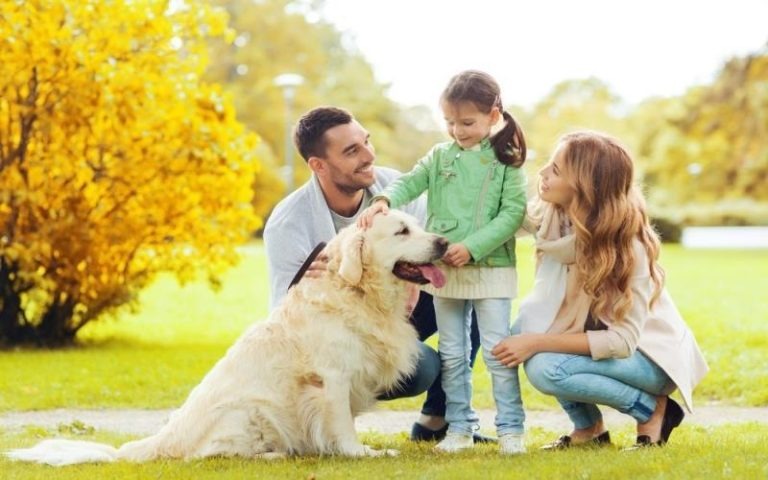
When Pets Feel What You Feel: Uncovering the Signs Your Pet Is Picking Up on Your Emotions
Explore how pets detect human emotions through behavior, body language, and scent; understand the science behind emotional bonds and learn signs that reveal your pet senses your feelings deeply.
🐶 Pet Star
31 min read · 8, Jul 2025

The Science Behind Pets Sensing Human Emotions
Humans and pets share an extraordinary bond, and recent studies reveal that this connection goes beyond simple companionship. Animals, especially dogs and cats, have evolved the remarkable ability to detect and respond to human emotions. But how do they do it?
Research shows that pets use a combination of sensory input—visual cues like facial expressions, auditory signals such as tone of voice, and even olfactory cues through scent—to gauge how their owners feel. A 2018 study published in the journal Scientific Reports found that dogs are capable of recognizing human emotions by integrating information from both faces and voices, displaying more attentiveness and empathetic behavior toward owners experiencing distress.
Neurologically, animals activate brain regions akin to human empathy circuits when exposed to human emotional signals. This neurological mirroring helps them respond with behaviors aimed at comforting or adapting to their owner's mood.
Why Pets Are Sensitive to Human Emotions
Evolutionary Roots of Emotional Sensitivity
Dogs were domesticated over 15,000 years ago, and their survival depended on reading human cues. Over generations, this selection pressure enhanced their sensitivity to human emotional states, aiding in cooperation and social bonding.
The Role of Oxytocin in Pet-Human Bonds
Known as the "love hormone," oxytocin increases in both humans and dogs during positive interactions such as petting or eye contact. This hormone fosters trust and emotional connection, making pets more attuned to their owners’ feelings.
Cats and Emotional Perception
While cats are often thought to be less emotionally perceptive, recent studies suggest that cats also respond to human emotions, though often in subtler ways. They might approach a sad owner more gently or choose to stay close during stressful times, indicating their sensitivity.
Key Signs Your Pet Is Picking Up on Your Emotions
1. Changes in Their Behavior Around You
If your pet suddenly becomes clingy or more affectionate when you’re upset, it’s a clear sign they sense your emotional state. Dogs might rest their head on your lap or follow you around more closely.
2. Altered Vocalizations
Pets often use vocalizations to respond emotionally. A dog might whine or bark softly when their owner is anxious, while cats may purr more frequently or meow with a unique tone.
3. Mirroring Your Energy Levels
Pets tend to reflect the energy and mood of their owners. If you’re calm and relaxed, your pet may rest quietly; if you’re agitated, they might become restless or anxious.
4. Protective or Comforting Behavior
Dogs especially may try to shield or comfort you during distress—lying close, nudging you, or even trying to block perceived threats. This behavior reflects their awareness of your emotional state.
5. Increased Attention to Your Facial Expressions and Voice
Pets are keen observers. They often watch your face intently and react differently to happy, sad, or angry tones of voice, adjusting their behavior accordingly.
How Pets Use Sensory Cues to Detect Emotions
Facial Expression Recognition
Dogs have been shown to differentiate between happy and angry human faces, responding more positively to friendly expressions. They use this ability to anticipate their owner’s mood and react appropriately.
Tone of Voice and Vocal Cues
The emotional tone of your voice carries powerful signals. Pets respond to pitch, volume, and rhythm changes. For example, soothing tones can calm an anxious dog, while sharp or loud tones may cause stress.
Scent and Chemical Signals
Humans emit chemical signals through sweat and breath that vary with emotional state. Pets’ acute olfactory senses detect these subtle changes. Studies suggest dogs can smell fear or stress hormones like cortisol, helping them recognize when their owner is upset.
The Role of Body Language in Emotional Communication
Posture and Movement
Pets read your body language, interpreting slumped shoulders, slow movements, or restless pacing as signs of sadness or anxiety.
Eye Contact
Eye contact plays a crucial role in pet-human emotional exchange. Prolonged gaze can signal affection or empathy, strengthening the bond.
Touch and Physical Contact
Pets often respond to how you touch them—gentle stroking can calm both pet and owner, while abrupt or tense movements might raise alertness or anxiety in pets.
Emotional Contagion: How Pets ‘Catch’ Your Mood
The concept of emotional contagion explains how pets ‘catch’ emotions from their owners, much like humans do with each other. This unconscious synchronization happens through cues like facial expressions, tone of voice, and body language, leading pets to adopt similar emotional states.
How Your Emotional State Affects Your Pet’s Behavior
Stress and Anxiety Transmission
Pets are highly sensitive to their owners’ stress, which can trigger anxiety or behavioral changes such as excessive barking, destructive chewing, or withdrawal.
Positive Emotions and Their Impact
Happiness and calmness from owners can soothe pets, encouraging playfulness, exploration, and relaxed behavior.
Can Pets Help Improve Your Emotional Well-being?
Therapeutic Roles of Pets
Pets play a significant role in emotional support, aiding people with depression, anxiety, PTSD, and other mental health challenges. Their responsiveness to human emotions makes them excellent companions for emotional regulation.
Scientific Evidence
Research shows interacting with pets lowers blood pressure, reduces cortisol levels, and increases oxytocin, all contributing to improved mood and decreased stress.
How to Enhance Emotional Communication with Your Pet
Spend Quality Time Together
Engaging in regular play, training, and quiet bonding time enhances mutual understanding and emotional connection.
Practice Mindful Interaction
Be aware of your emotions and body language around your pet. Positive, calm energy encourages reciprocal behavior.
Train Emotional Cues
Training your pet to recognize verbal and non-verbal emotional cues strengthens communication.
Can Pets Help Improve Your Emotional Well-being?
The relationship between pets and human emotions is not one-sided. While pets can sense and respond to human feelings, they also profoundly influence our emotional health, acting as natural therapists and emotional support systems.
Therapeutic Roles of Pets
Animals have long been used in therapy, from traditional service dogs aiding people with disabilities to emotional support animals helping those with mental health conditions. Their ability to pick up on human emotions allows them to respond in ways that provide comfort, companionship, and relief.
For example, dogs trained to assist people with PTSD can sense anxiety episodes and intervene by nudging, licking, or grounding their owners. Even untrained pets often offer similar emotional support through companionship and presence.
Scientific Evidence
A robust body of scientific literature supports the positive emotional impact of pets. Interacting with animals has been shown to:
- Lower blood pressure and heart rate
- Reduce cortisol (stress hormone) levels
- Increase oxytocin (bonding hormone) release
- Improve symptoms of depression and anxiety
A 2019 meta-analysis published in BMC Psychiatry concluded that pet ownership and animal-assisted therapy effectively reduce anxiety and depressive symptoms in diverse populations.
How to Enhance Emotional Communication with Your Pet
To deepen your emotional connection and ensure your pet feels understood and supported, proactive steps can foster better communication.
Spend Quality Time Together
Dedicated time for play, grooming, training, or simply sitting together reinforces trust and helps your pet read your emotional cues more clearly. Daily routines combined with spontaneous moments of connection improve mutual understanding.
Tip: Try “quiet time” sessions where you and your pet relax together without distractions, focusing on presence and calm energy.
Practice Mindful Interaction
Being aware of your own emotions and body language is crucial. Pets are sensitive to subtle cues, so maintaining a calm and confident demeanor can soothe anxious pets.
Mindfulness exercises for owners, such as deep breathing or meditation, can improve your emotional state, which in turn benefits your pet’s behavior and mood.
Train Emotional Cues
Teaching pets to recognize verbal and non-verbal emotional signals enhances communication. For instance, pairing specific words or tones with actions (like “calm” during relaxation) helps pets understand and anticipate emotional states.
Professional trainers often use this approach to help anxious dogs recognize and respond to owner cues, reducing stress for both.
When to Seek Professional Help
Recognizing when emotional transmission affects your pet’s behavior is important. If you notice prolonged anxiety, destructive behavior, or sudden aggression linked to your emotional state, consulting a veterinarian or an animal behaviorist is essential.
Professionals can assess your pet’s behavior, identify triggers, and develop behavior modification plans that include owner involvement, creating healthier emotional environments.
Example: Cognitive-behavioral therapy for pets and owners can teach coping mechanisms, improving emotional resilience and communication.
Conclusion
The profound emotional connection between pets and their owners transcends simple companionship. Pets not only sense but also respond to human emotions in remarkable ways, providing comfort, support, and even therapeutic benefits. Understanding the signs that your pet is picking up on your feelings helps strengthen this unique bond and improves both your and your pet’s emotional well-being.
Scientific research confirms that pets use a combination of visual cues, vocal tones, body language, and scent to interpret human emotions. This ability has deep evolutionary roots, particularly in dogs, whose domestication has fostered an exceptional attunement to human states of mind. Cats, too, demonstrate emotional sensitivity, albeit often more subtly.
Recognizing changes in your pet’s behavior—such as increased clinginess, altered vocalizations, mirroring your energy, or protective gestures—can reveal how attuned they are to your inner world. Likewise, your emotional state directly impacts your pet’s behavior and health, underscoring the importance of managing stress and cultivating positive interactions.
By investing time in quality bonding, practicing mindful interaction, and even training emotional cues, you can enhance communication with your pet. When emotional challenges arise, seeking professional guidance ensures the well-being of both pet and owner.
Looking ahead, ongoing research promises new insights and tools to deepen our understanding of pet-human emotional dynamics, improving therapeutic approaches and everyday relationships.
Ultimately, the emotional symbiosis between you and your pet enriches your life, bringing mutual comfort, joy, and resilience. Paying attention to these emotional exchanges allows you to nurture a happier, healthier companionship that lasts a lifetime.
Q&A
Q1: How can I tell if my pet is sensing my emotions?
A1: Look for changes like increased affection, vocalizations, mirroring your mood, protective behavior, or attention to your facial expressions and tone of voice.
Q2: Do all pets pick up on human emotions equally?
A2: Dogs are generally more attuned due to their domestication history, but cats and other pets also show emotional sensitivity in subtler ways.
Q3: Can my stress negatively affect my pet?
A3: Yes, owner stress can raise pets’ cortisol levels, leading to anxiety, behavioral problems, and health issues.
Q4: How does oxytocin affect pet-owner emotional bonds?
A4: Oxytocin, the “love hormone,” increases in both during positive interaction, strengthening trust and emotional connection.
Q5: Are there specific behaviors that show my pet is comforting me?
A5: Yes, behaviors like nudging, staying close, licking, or lying next to you often indicate your pet is trying to offer comfort.
Q6: Can training help improve my pet’s understanding of my emotions?
A6: Absolutely. Training emotional cues and practicing mindful interaction can enhance communication and reduce stress.
Q7: What should I do if my pet shows anxiety linked to my mood?
A7: Consult a veterinarian or behaviorist who can help create strategies for managing your pet’s emotional health.
Q8: Do pets respond differently to happy versus angry emotions?
A8: Yes, pets often respond positively to happy, calm emotions and may become anxious or withdrawn in response to anger.
Q9: Can pets detect emotions through scent?
A9: Yes, pets have keen olfactory senses and can detect chemical changes related to stress or fear in humans.
Q10: How can I strengthen my emotional bond with my pet?
A10: Spend quality time, practice calm and positive interactions, and engage in training or play that promotes mutual understanding.
Similar Articles
Find more relatable content in similar Articles

The Growing Trend of Therapy and Emotional Support Ani..
Exploring the remarkable rise .. Read More

How Climate Change Affects Wild and Domestic Animals...
Climate change is dramatically.. Read More

Pets and Mental Health: The Science Behind Emotional H..
Discover the profound impact o.. Read More

How Pets Strengthen Family Bonds...
Pets are more than just compan.. Read More
Explore Other Categories
© 2024 Copyrights by rPets. All Rights Reserved.